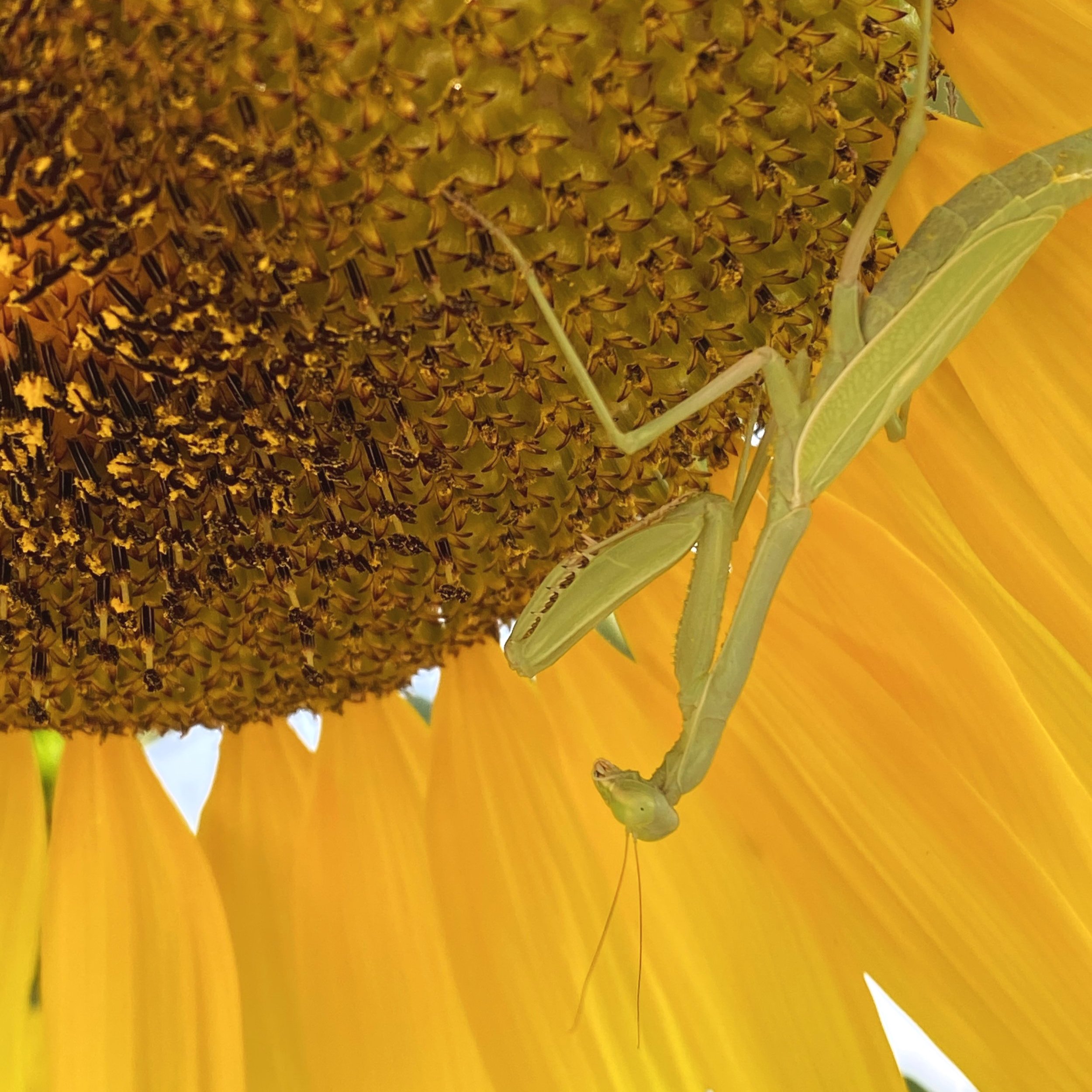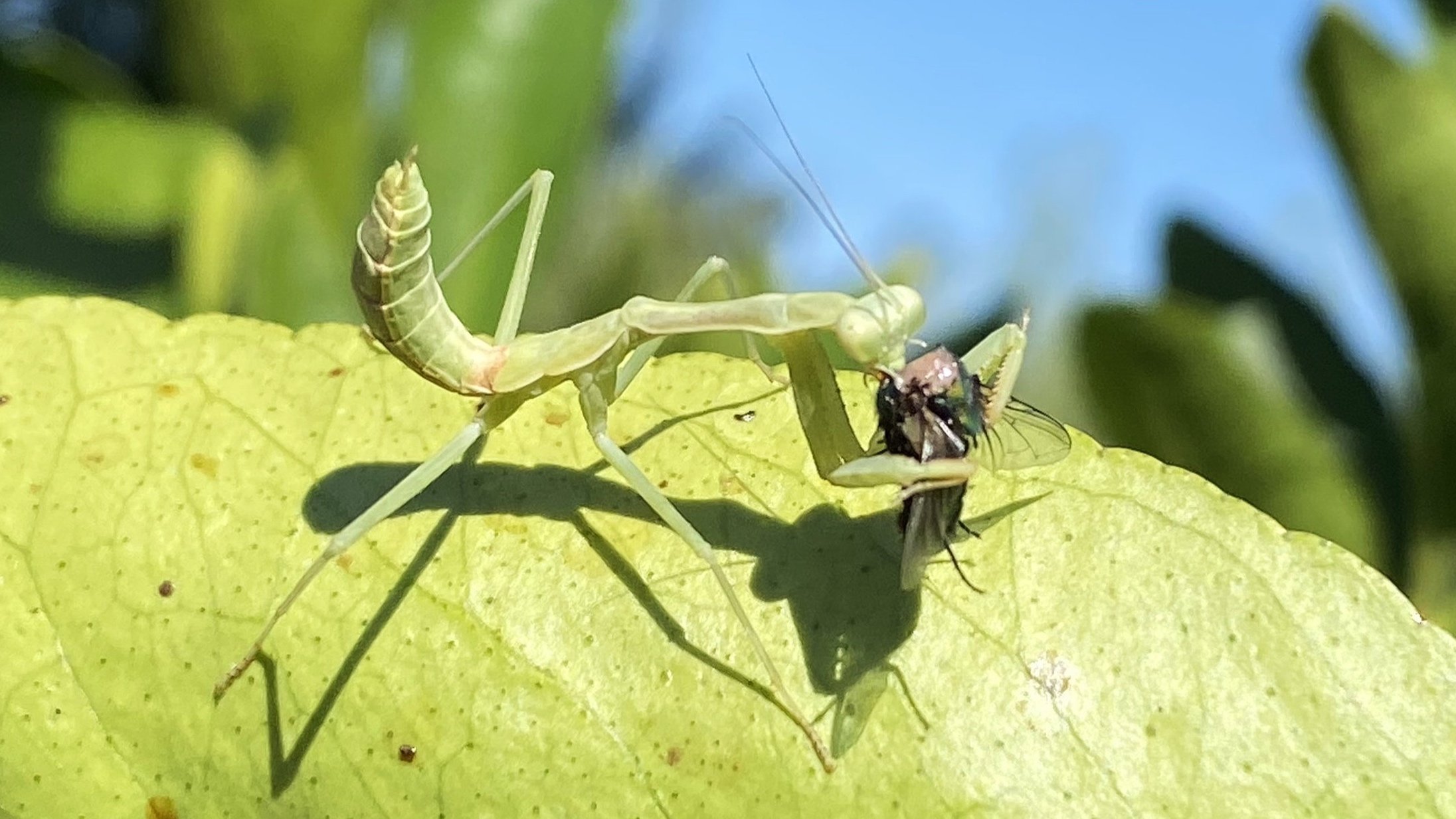Beneficial Insects - Praying Mantis
Beneficial Insects – Praying Mantis
Praying Mantis (Tenodera aridifolia sinensis) are beneficial insects that feed on soft-bodied insects when young, including aphids, caterpillars, leafhoppers, fruitflies, mosquitos, wasps, moths, crickets, butterflies, beetles, grasshoppers, spiders and flies. We use the term ”beneficial” loosely - see our note below. You will commonly find a second species in your garden, Stagmomantis californica. You can tell the difference by their body shape. T. a. sinensis has a longer slender body, while S. californica has a horizontally flattened body which is often curled upward over its back.
Chinese Mantis - Female (Tenodera aridifolia sinensis)
Chinese Mantis - Male (Tenodera aridifolia sinensis)
Both species are 1-4” long, green and tan to tan colored and known to be voracious feeders. They will feed on increasingly larger prey as they grow, commonly taking down prey 3 times their size. They do not actively hunt food but perch on plants and objects where they wait for prey to come within their reach. Their triangular head can twist 180 degrees in order to watch for and track prey.
The female lays eggs in fall which overwinter in a hard egg case (ootheca) and hatch in spring. They produce one generation a year.
Note: Use caution if you have a pollinator garden as praying mantis are indiscriminate carnivores and are generalists, and will eat butterflies, bees and even hummingbirds. They will consume both harmful and beneficial insects, including ladybugs and green lacewings.
They are available commercially. In very early spring we carry egg cases of Tenodera aridifolia sinensis from Tip Top Bio-Control.
Western Mantis - Female (Stagmomantis californica)
Western Mantis - Male (Stagmomantis californica)
Cultural Practices
Avoid the use of broad-spectrum, systemic insecticides, wetting agents or spreader stickers.
Control ants with bait traps or sticky insect barriers on trees.
Best used in a mature garden that hosts a wide variety of insects like beetles and caterpillars.
Release Rate: 1 egg case per 1,500 square feet or 3 egg cases per 5,000 square feet. One egg case will hatch approximately 50 – 200 baby mantis all at once.
Release of Praying Mantis
Store in the refrigerator and release when it has been warm for a few weeks.
Tie each egg case to twigs or branches with plenty of leaf cover about 1-3 feet above the ground.
Do not place egg cases on the ground. They will be consumed by ants.
It can take up to 8 weeks of warm weather for them to hatch. Hatching requires at least 10 to 15 days of temperature 75-80 degrees. Once hatched the babies will disperse within an hour.
Protect the egg cases from predators and weather.




